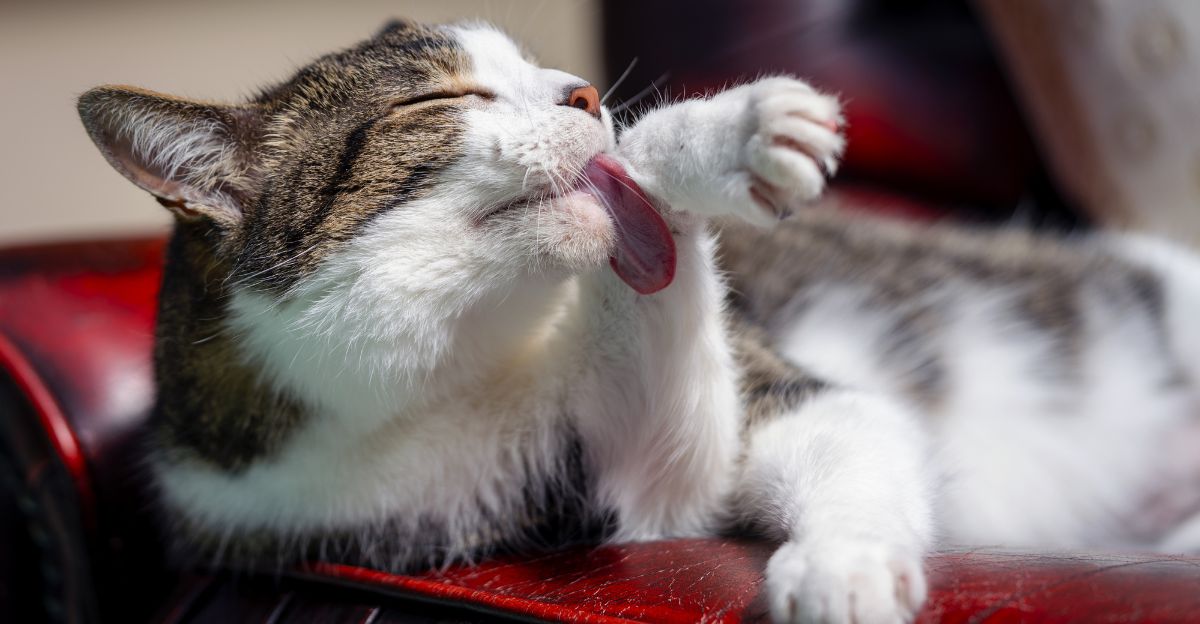Why Is My Cat Shedding So Much? Here's What You Need to Know

Finding cat hair on your couch, clothes, and every surface of your home? You're not alone. Shedding is a normal part of feline life—but sometimes it feels like your cat is losing fur by the handful.
The good news? Shedding can usually be managed with the right care, awareness, and grooming tools.
Let’s dive into why your cat may be shedding so much, what’s normal, what’s not, and what you can do about it.
What Causes Excessive Shedding in Cats?
Most cats shed to some extent, but several factors can cause increased hair loss:
|
Cause |
Description |
|
Seasonal Changes |
Cats often shed more in spring and fall as they transition between coat thickness. |
|
Poor Diet |
Lack of omega-3s or nutrients can lead to a dry, shedding coat. |
|
Stress or Anxiety |
Cats may overgroom or shed more when stressed (new home, travel, etc.). |
|
Health Issues |
Fleas, allergies, thyroid problems, or skin infections can trigger hair loss. |
|
Age |
Older cats may shed more due to decreased grooming or skin changes. |
|
Indoor Lifestyle |
Artificial lighting disrupts natural coat cycles, causing year-round shedding. |
If your cat is shedding in clumps, has bald spots, or is scratching excessively, consult your vet to rule out medical causes.
How Do You Know If Shedding Is Normal or a Problem?
Normal shedding means your cat still has a shiny, full coat with no bald patches.
Watch out for:
● Bald spots or thinning fur
● Excessive scratching or licking
● Red, flaky, or irritated skin
● Sudden changes in behavior or grooming
Tip: Daily brushing is one of the best ways to spot early skin or coat issues before they escalate.
How to Reduce Shedding at Home?
The best way to manage cat moulting is with regular grooming and a healthy lifestyle.
Try these at-home strategies:
● Feed a balanced diet rich in omega-3 fatty acids
● Brush regularly using a gentle, effective tool
● Bathe only if necessary with a cat-safe shampoo
● Reduce stress with play, routine, and quiet spaces
Best Grooming Tool: Furgo
|
Feature |
Benefit |
|
Mist + Comb |
Hydrates fur and softens tangles to reduce pulling |
|
Quiet Spray |
Soothes anxious pets while grooming |
|
Ergonomic Handle |
Comfortable for long sessions |
|
Use with Water or Conditioner |
Adds flexibility and shine |
The Furgo makes shedding control easier and more enjoyable for both you and your cat
How Often Should You Brush a Shedding Cat?
|
Coat Type |
Recommended Brushing |
|
Short-Haired |
2–3 times per week |
|
Medium-Haired |
3–5 times per week |
|
Long-Haired |
Daily brushing recommended |
Brushing removes loose hair before it ends up on your floor (or your clothes). Plus, it boosts circulation and promotes a healthier coat.
Consistency is key. Make brushing part of your routine—even just 5 minutes can make a big difference.
When to See a Vet About Shedding?
If you notice any of the following, it’s time to schedule a check-up:
● Sudden or extreme hair loss
● Open sores or persistent scratching
● Dandruff, bumps, or skin odor
● Behavior changes (hiding, aggression, overgrooming)
Don't guess. A vet can diagnose underlying conditions like allergies or thyroid imbalance.
The FurGo Difference: Make Grooming a Daily Bond, Not a Battle
At FurGo, we believe grooming shouldn’t feel like a chore. That’s why we created the Furgo: to make shedding care a soothing ritual, not a stressful event.
Why Pet Parents Love Misty:
● Detangles without tugging or static
● Soothing mist calms nervous pets
● Mess-free and portable
● Reduces hair buildup at home
Brushing isn’t just for beauty—it’s how we show love.
Final Thoughts: Shedding Is Normal—But It Shouldn’t Take Over Your Life
Yes, shedding is part of having a cat. But with the right approach and tools, you can keep your home cleaner, your cat healthier, and your daily grooming sessions drama-free.
Try the Furgo and turn a messy problem into a quiet moment of connection.
🐾 Frequently Asked Questions
Q: Why is my cat shedding so much all of a sudden?
A: Sudden, excessive shedding may be caused by stress, dietary changes, illness, or seasonal coat shifts. If your cat has bald spots, irritated skin, or behavior changes, consult a vet to rule out allergies, parasites, or medical issues.
Q: Is it normal for indoor cats to shed a lot?
A: Yes, indoor cats can shed year-round due to artificial lighting disrupting their natural coat cycles. Regular brushing and a balanced diet can help manage indoor shedding effectively.
Q: How often should I brush my shedding cat?
A: Short-haired: 2–3 times per week
Medium-haired: 3–5 times per week
Long-haired: Daily Consistent brushing helps remove loose hair and prevents matting.
Q: When should I be concerned about my cat’s shedding?
A: Seek veterinary advice if you notice:
-
Bald spots or patchy hair loss
-
Excessive scratching or overgrooming
-
Red, flaky, or smelly skin
-
Changes in behavior or energy levels